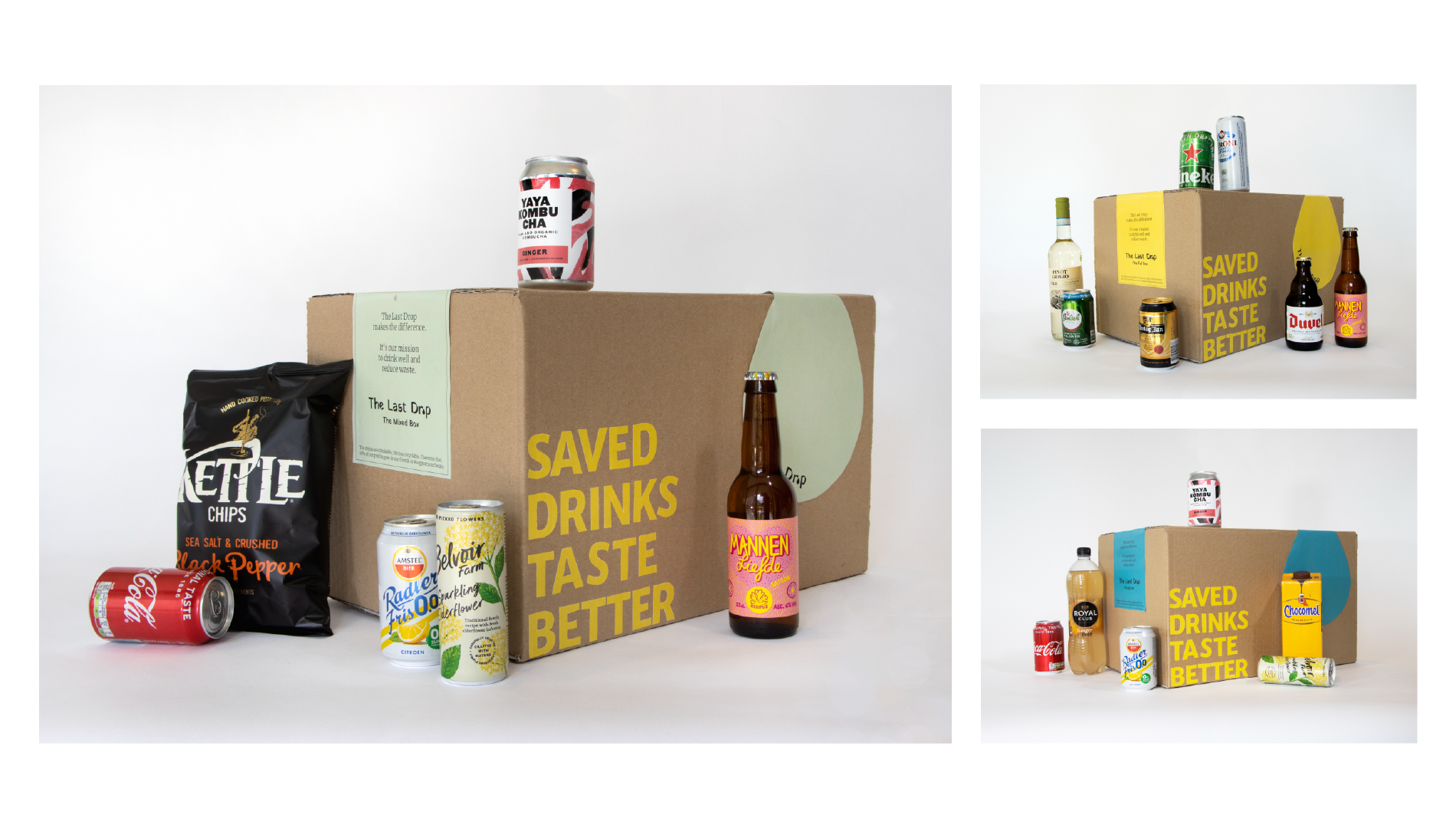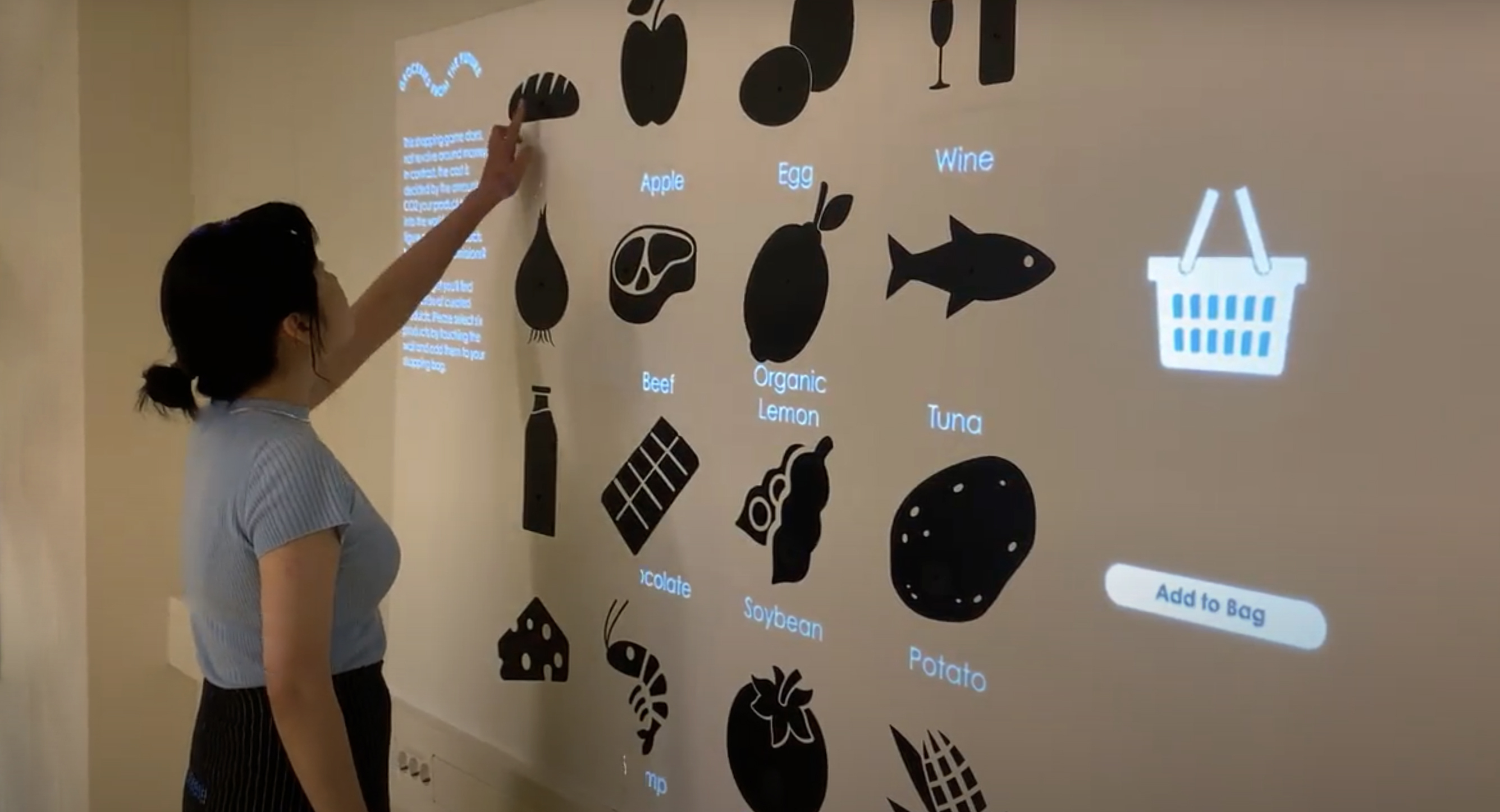
Tree to Trash
Webstory for sustainability awareness
-
Client:
Hogeschool van Amsterdam
- Team:
-
Disciplines:
Visual Design, Storytelling, Experience Design
-
Schoolyear:
2019-2020
Every year, over 19 billion paper cups are used worldwide. These are worrying numbers in the face of climate change. However, as humanity, we do too little to change these circumstances. Our project approaches sustainability awareness in a new, unconventional way.
We worked with the Waste Management Department of the HvA & UvA to jumpstart their mission of becoming zero-waste institutes within the next 10 years. To get familiar with the problem space, we first conducted field-research around the school buildings including observation of the space and interviews with students about their waste habits.
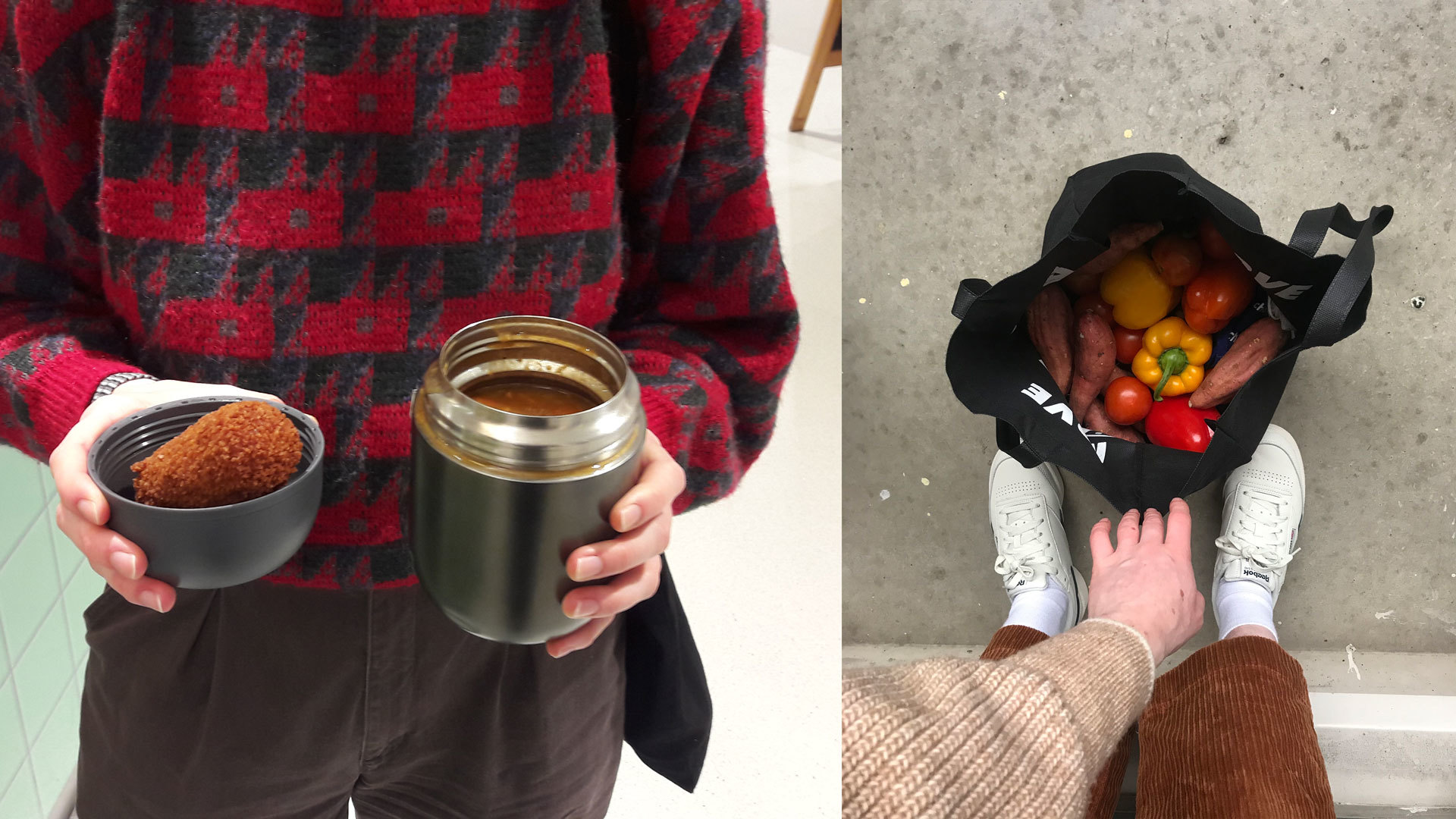
Furthermore, two of our team-members attempted a zero-waste lifestyle for the first month of the project as an auto-ethnographic approach to the problem space. From this, we found that the biggest obstacle hindering the university from being more sustainable is single-use disposable products. We focused our project on exposing the serious problem of one in particular: the paper cup.
Opening Pandora's box
Through our research, we became curious about what goes into making a paper cup. We wondered about the natural resources and materials employed in the production process of such a product that is only used for a few minutes. We are all familiar with where products like these end up, as we commonly see pictures of trash in landfills and plastic in oceans, but have no idea of what it takes to make these products before they get to our hands.
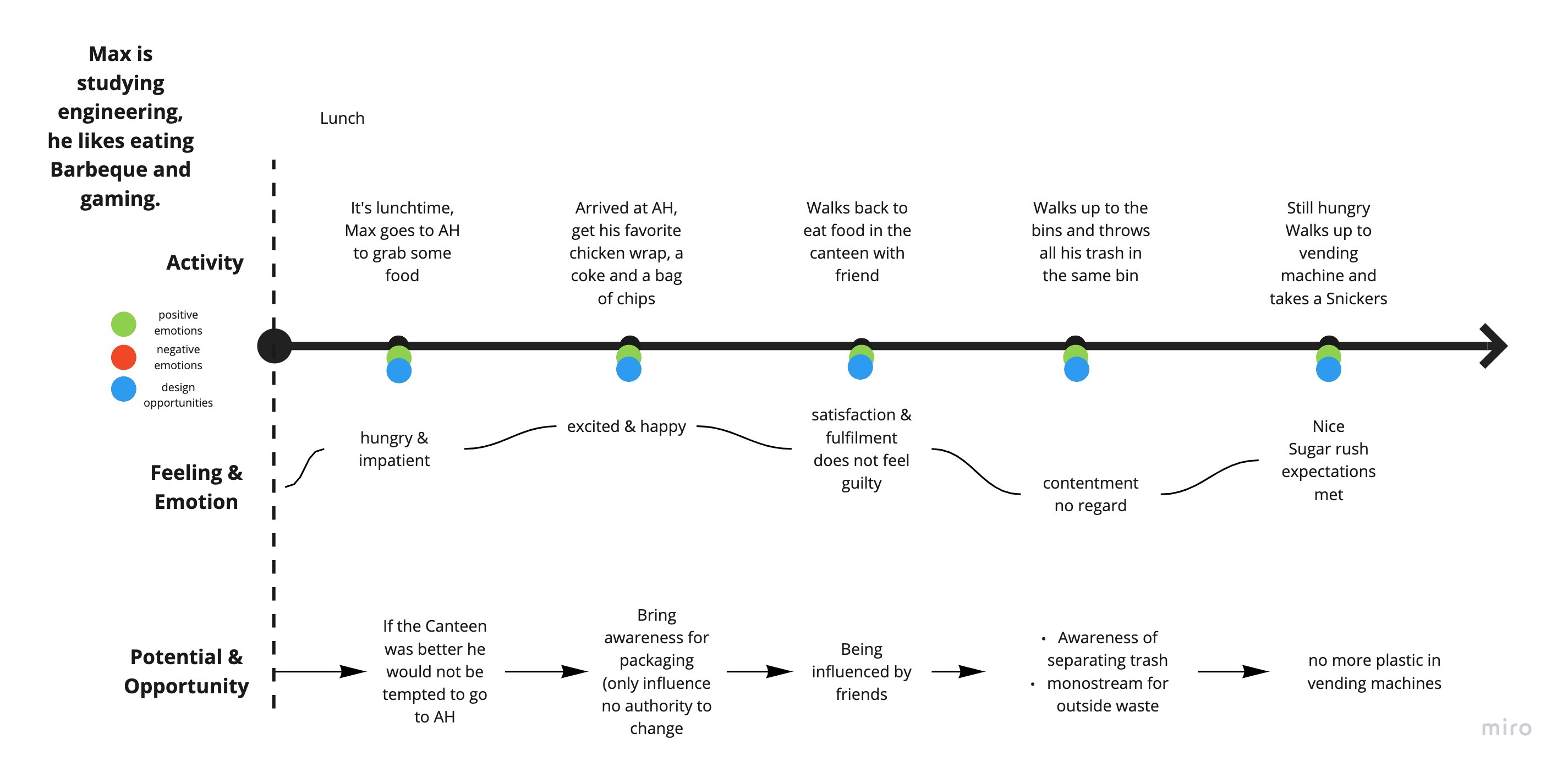
We chose to use storytelling to build awareness for this part of the process. Our narrative follows the production process from the point-of-view of the paper cup. The main character, Ornas, tells his story from tree to trash. The final form is an audio-visual webstory with interactive, abstract graphics that offers room for imagination from the point of the user.
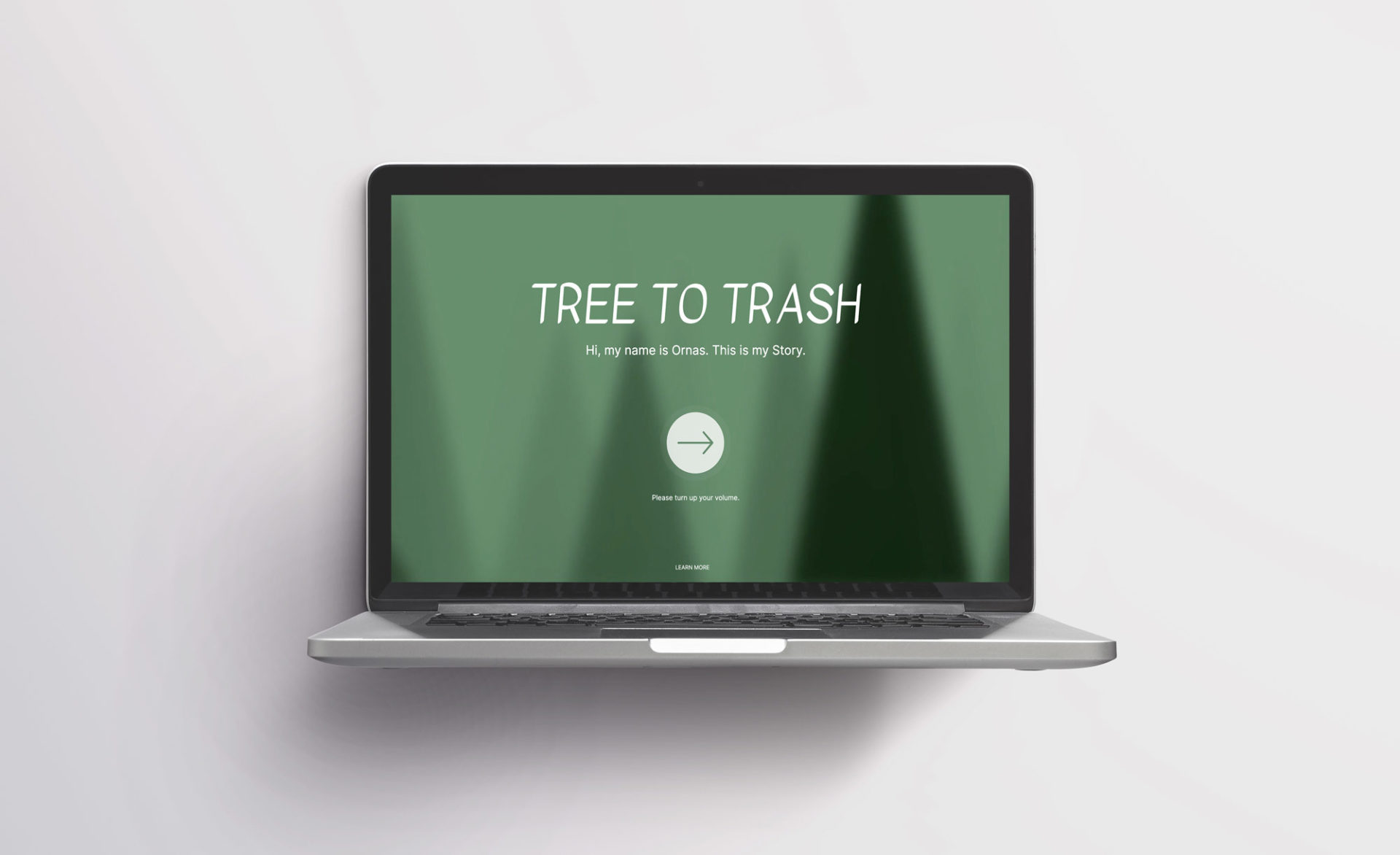
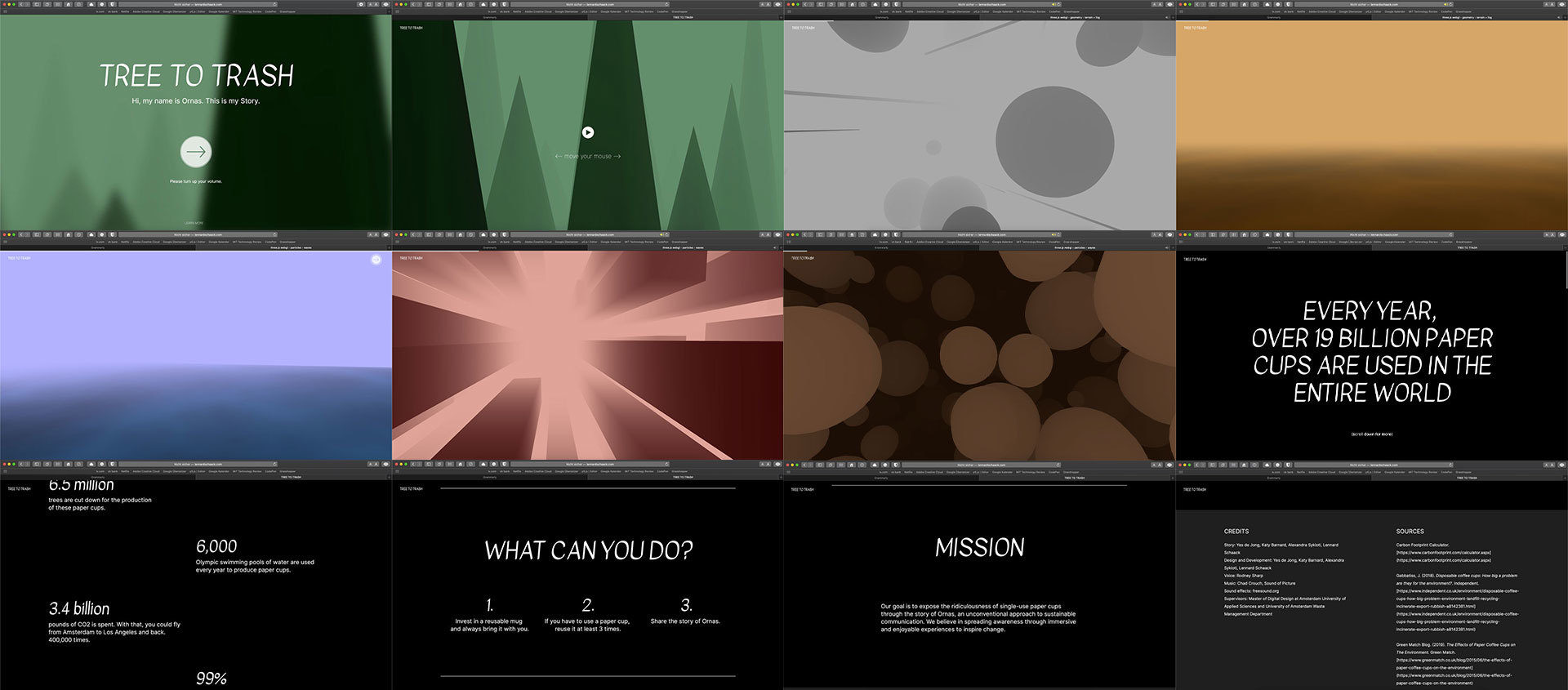
The product is fully developed on desktop and mobile devices. After the user has been led through the story, they will approach a factual information page that provides real data about the ecological impact of single-use paper cups. It also includes tips on how to be more sustainable and has an explanation of our mission for the project.
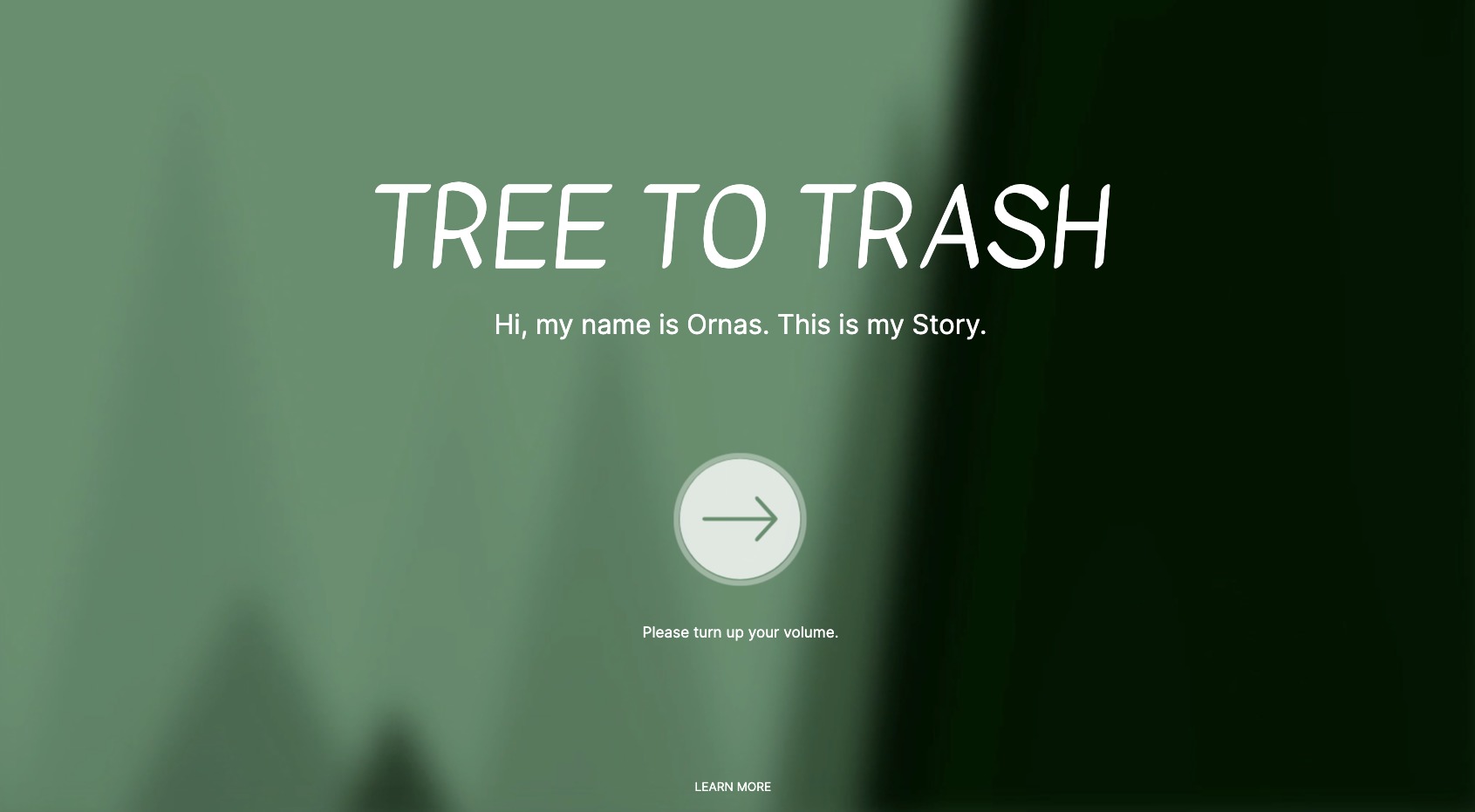
Watch the narrative!
A Complex Issue
Designing for sustainability and behaviour change is a complex challenge. There are many immediate and tertiary stakeholders that all have to be kept in mind. Our project advocates for the reduction of single-use paper cups, but this change affects a long chain of production processes. This made us aware of how fragile every system is. If you tap one domino, a million others go falling and people's livelihoods are at stake. We found that making sustainable change cannot happen overnight, but must be a combination of awareness building and structural change.

Our project addresses the awareness side of the equation, and we hope that our use of empathetic storytelling will impact people to change their behaviour and habits.
The Potential to Change Behaviour
We believe that our webstory, Tree to Trash, has the potential to get people thinking about the impact of paper cups in a new way and ultimately lead to behaviour change. To market and communicate the product, we ideated on how to extend the project further. We can imagine it being part of a larger awareness campaign like printing QR codes to the story on paper cups or implementing parts of the story into social media posts. Ultimately, we want this story to bring knowledge to spark discussion about the absurdness of single-use paper cups to lead to further change across the university.
